The Corsair RM750e ATX 3.1 Review: Simple And Effective
by E. Fylladitakis on July 18, 2024 9:00 AM EST- Posted in
- Cases/Cooling/PSUs
- Corsair
- PSUs
- 12V-2x6
- ATX v3.1
Hot Test Results (~45°C Ambient Temperature)
Inside our hotbox, the Corsair RM750e 750W PSU exhibits a significant decrease in efficiency under heavy loads, with figures of 87.3% under a 115 VAC input and 90.1% with a 230 VAC source, compared to 89.5% and 92.4%, respectively, during cold testing. This reduction in efficiency is both higher than anticipated and inconsistent across the load range, with the efficiency gap widening as the load increases, suggesting measurable thermal stress, even though the internal temperatures of the unit are relatively low.
Under hot testing conditions, the Corsair RM750e PSU's fan activates almost immediately and ramps up its speed more aggressively compared to cooler environments, almost linearly with respect to the load. As the load approaches 80% capacity, the fan reaches its maximum speed. The acoustic levels are manageable up to 30% load but the unit will become clearly audible after that.
The thermal performance of the Corsair RM750e is good, with the unit maintaining fairly low internal temperatures despite the efficiency drop. Although the fan’s speed peaks at just 80% load, the internal temperatures of the unit are relatively low despite the very high ambient temperature, even at 100% load. This bodes well for the long-term reliability of the unit, especially if we were to consider its passive components a notch below what we usually find in top-tier units quality-wise.


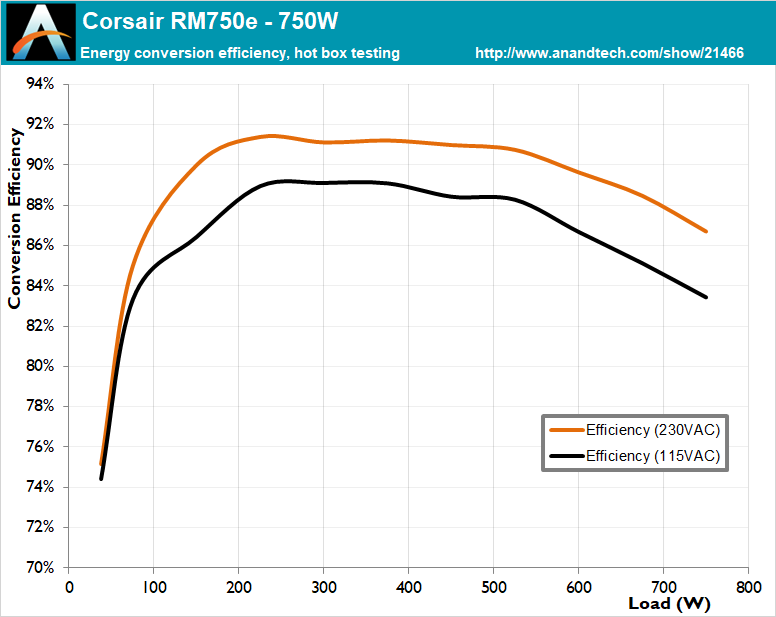
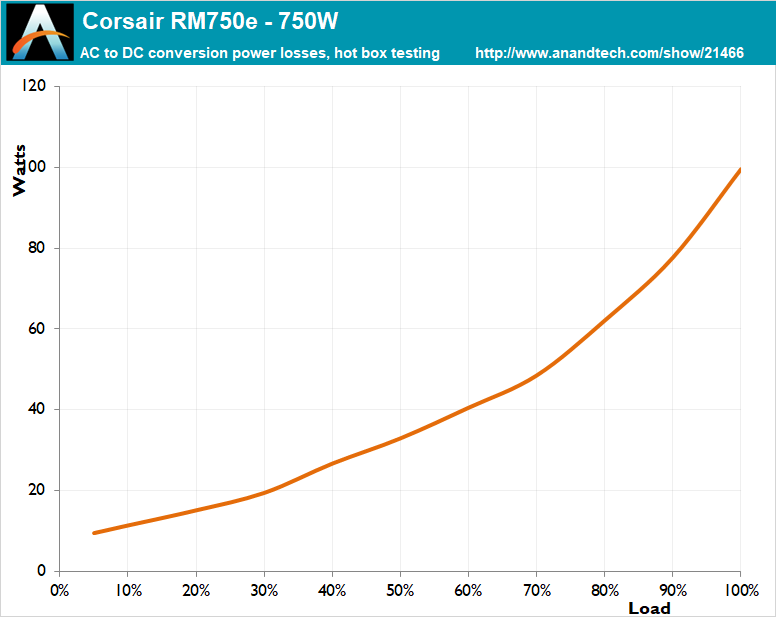
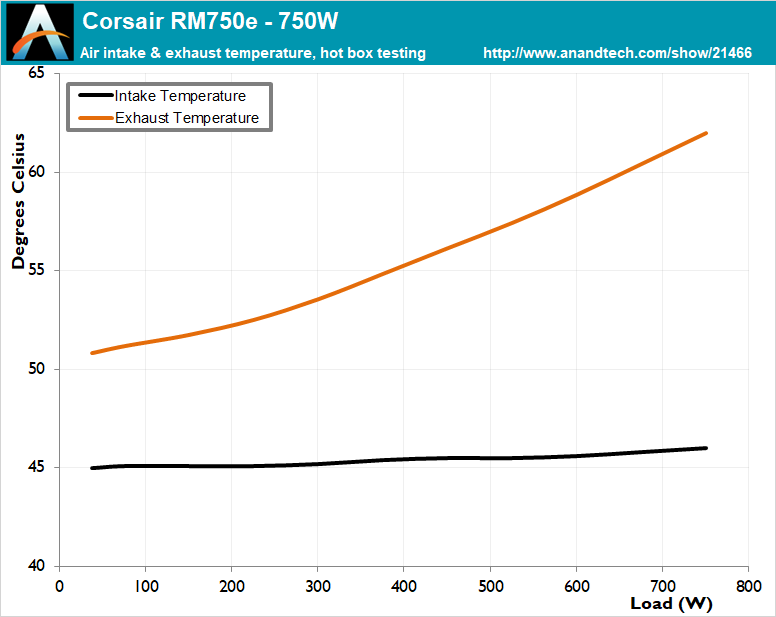
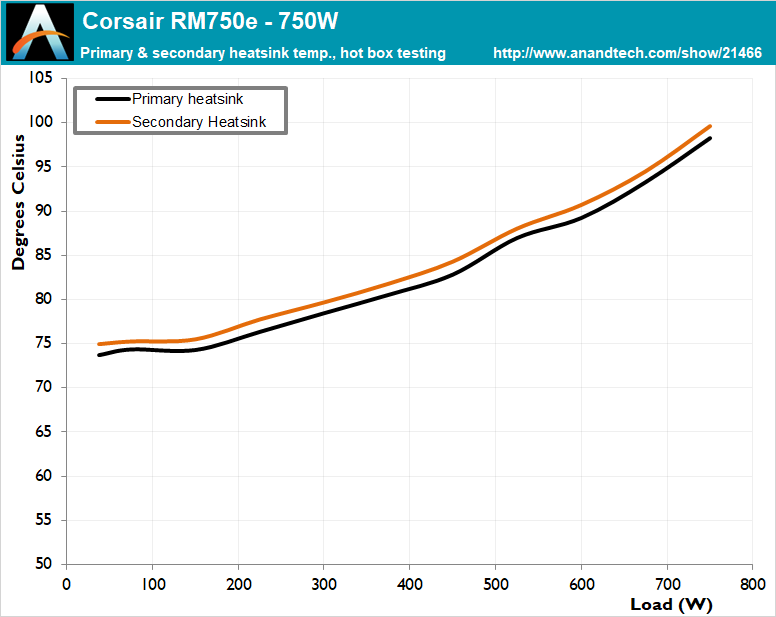
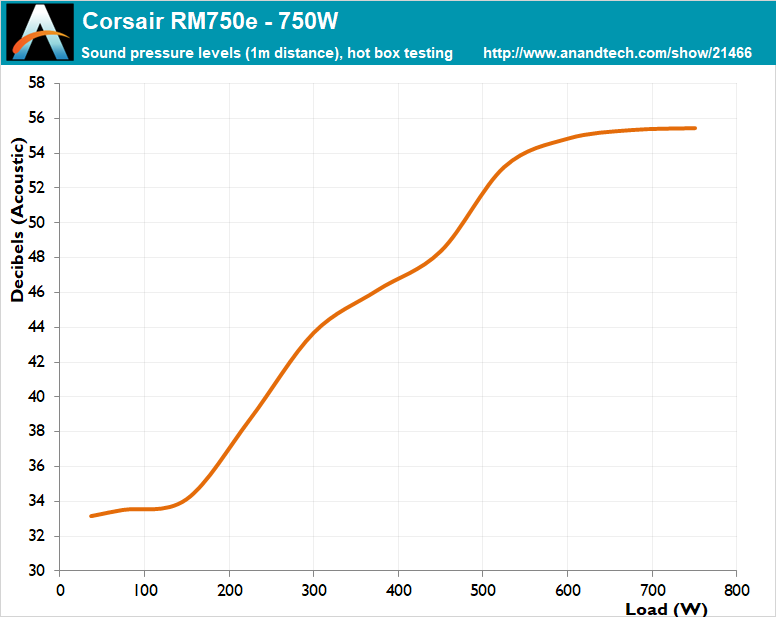








3 Comments
View All Comments
Oxford Guy - Thursday, July 18, 2024 - link
I have long been under the impression that sleeve fans require vertical orientation for proper lubrication. Is the fan a modified sleeve bearing such as an FDB?meacupla - Thursday, July 18, 2024 - link
Yes, It uses a rifle bearing, which is a type of FDB.Hresna - Saturday, July 20, 2024 - link
I wish the ‘i’ line would get more traction and other PSU manufacturers would get onboard with the USB connectivity for poweruser readouts from the PSU.I’ve had my corsair RM-750i for 5 years now, currently powering a 13900k and an RTX-4090. A big part of the reason I’m comfortable with that was being able to stress-test extensively and actually see the power draws in hwinfo64. I keep the silicon sensibly undervolted and power limited just the same, because I’m an efficiency nut, but I love knowing exactly what my power draw is without having to hook up external monitoring gear.